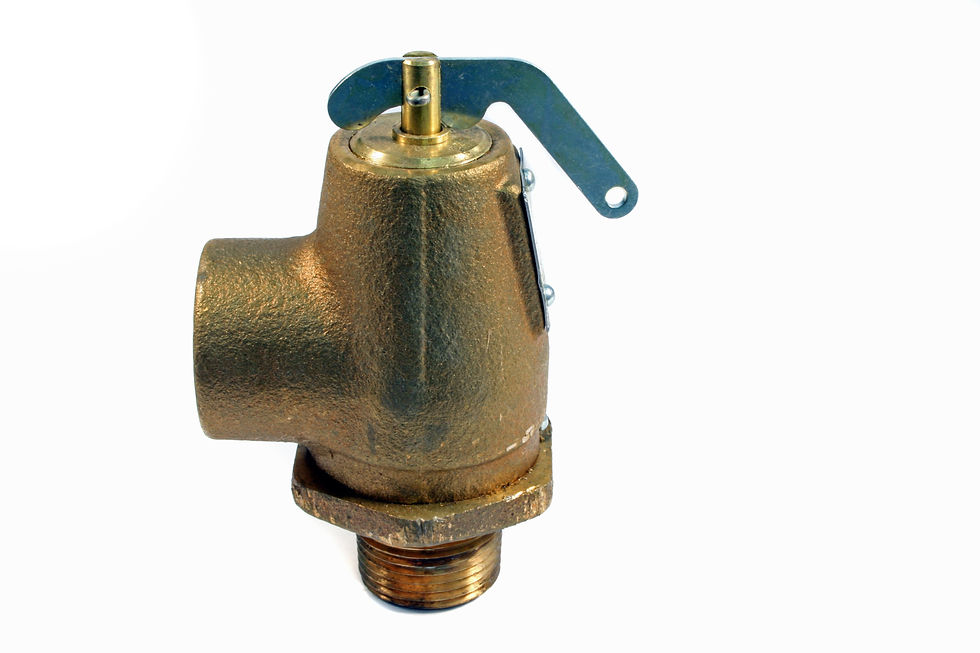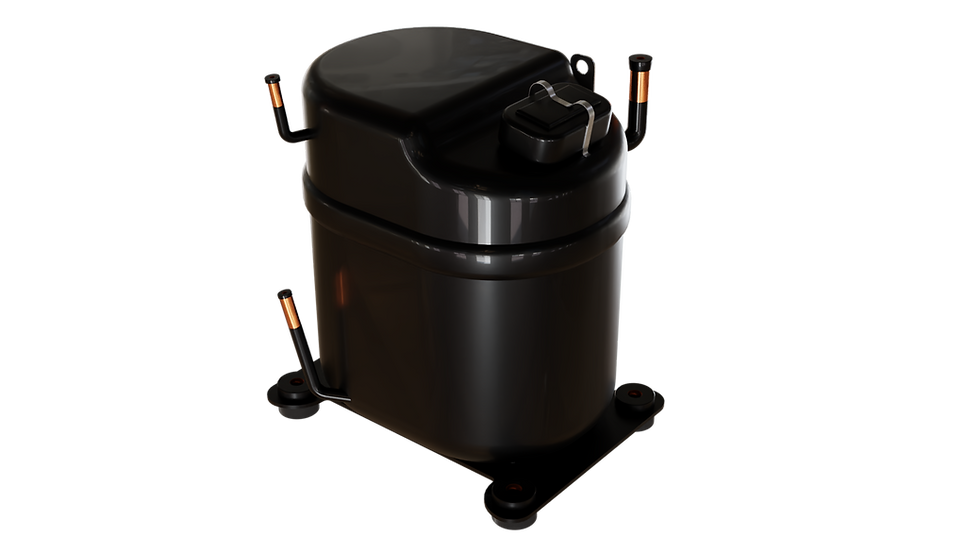Equipment used in HVAC Industry
- SkillCat Team

- Mar 31
- 5 min read
EPA 608 Core Chapter 8
Equipment Classification
In this module, we will take a look at the properties of equipment used in HVAC systems.
Appliance Pressure

We look at the pressure of the refrigerant in the liquid phase to decide what level of pressure the appliance operates at.
The levels of pressure in appliances can be categorized into three types:
High
Medium
Low
A refrigerant’s pressure is determined by the pressure of the appliance it is in. For example, a refrigerant used in a low-pressure appliance would be a low-pressure refrigerant. This is how we classify the pressure of refrigerants according to Section 608 regulations.
Examples of refrigerants used in high-pressure appliances include:
R-22
R-407c
R-410a
R-502
Any one of these is considered a high-pressure refrigerant.
Examples of refrigerants used in medium pressure appliances include:
R-12
R-134a
R-500
Any one of these is considered a medium pressure refrigerant.
Examples of refrigerants used in low-pressure appliances include:
R-11
R-123
R-113
Any of these would be considered a low-pressure refrigerant.
Recovery Devices
Recall that recovering is when refrigerant is removed from a system and stored in a container.
There are two main types of recovery
System Dependent Recovery
Self-Contained Recovery
The type of device used depends on what type of recovery the technician is performing.
System dependent recovery is kind of how it sounds. The recovery process depends on the system. This process of recovering uses the pressure of the compressor to recover the refrigerant. Hence “system dependent”.
Recall that refrigerant will flow from high pressure to low pressure. This is similar to how heat will flow from high temperature to low temperature, like from your hot, steaming mug to the surroundings.

So the compressor is in high pressure. If you connect the compressor to a low-pressure container, the refrigerant will naturally flow from the high-pressure compressor to the low-pressure recovery device. This is system-dependent recovery. It depends on the compressor’s pressure.
Let’s say you are using a recovery device that uses this method of system dependent recovery. Then your recovery equipment or device is labeled a system dependent device.
Self-contained recovery is the opposite. It does not rely on the pressure of the compressor or any internal components.
Self-contained recovery is the opposite. It recovers refrigerant without relying on the pressure of the compressor or any internal components.
In this module, we discussed how to classify appliances based on their pressure.
We also defined different types of recovery devices.
Equipment and Components
In this module, we are going to take a look at the different types of equipment used to service HVAC systems.
Manifold Gauge Set

A manifold gauge is a tool commonly used by technicians to service HVAC equipment. It is used to measure the pressures and temperatures of the system. Another name for the manifold gauge is the service manifold.
In the center of the manifold gauge set is the yellow hose, which is the center port. The yellow hose is used for evacuation, recovering, and charging.
Color coding on the manifold gauge means the following:
Blue Gauge - Low Pressure side
Red Gauge - High Pressure side
The high pressure side (color coded red) of the service manifold shows a range of pressure from
0 to 800 psi
The low pressure side (color coded blue) of the service manifold shows pressure in units of:
Psig, and
inHG (inches of Mercury

Process Stub
If a piece of equipment contains CFC or HCFC refrigerants, Section 608 requires that it has a process stub.
A process stub is a usually straight piece of tubing that provides access to the refrigerant inside an appliance. The process stub is resealed at the end of a technician’s service.
The purpose of a process stub is to make it easier to recover refrigerant. This is also called a service aperture.
Relief Valves

In order to make sure that the system is completely safe to use, we need to replace any components that show the danger of failing. This way, we prevent major failures that can create life threatening situations. Safety is always first.
Relief valves are installed to provide insurance in case pressure builds up in the system. It is too high because of irregularities in the system, this can cause major explosions. This is a major safety concern.
If the body of relief valves shows any sign of corrosion, the relief valve must be replaced. Corrosion on the body indicates damage that may prevent the relief valve from doing its job to regulate pressure.
In this module, we looked at the different types of equipment we commonly used. We discussed conventions, procedures, and specific properties of devices we use in this trade.
Equipment Malfunction
In this module, we will discuss what procedures to follow when the equipment malfunctions.
Compressor Burnout
In the event of a compressor burnout, we need to access the damage and clean up. A compressor can burn out from high temperatures that cause its components to fail.

If a compressor burns out, the oil turns highly acidic and there will be an acidic smell. The burnout can be severe or mild, and the technician needs to access it.
If you suspect burnout or any major equipment failure, you need to take an oil sample. An oil sample will give you more details on what is wrong with the system.
To clean up a system burnout, it is important to do the following:
Install a liquid line filter-drier
Install a suction line filter-drier
Flush system with dry nitrogen
After a compressor burnout, we need to flush the system with nitrogen to get rid of oil residue in the purge lines. Alternatively, we could also use a commercial system flushing solution. Both of these are approved methods of cleaning up.
We cannot flush with liquid refrigerant to clean the field tubing. This would vent the refrigerant, and recall that this is illegal under Section 608.
Faulty components must also be replaced so that the system can function again.
Crankcase Migration
The compressor’s crankcase acts like a container that collects refrigerant oil in the refrigeration system.

When the system is not running, the refrigerant does not have any force or pressure acting on it. Because of this, it will naturally flow to where there is the least pressure.
Imagine juggling some oranges. As you are juggling, the oranges are moving in a circle in the air because your hands are moving them in a circular motion. If your hands stop moving, the oranges will fall to the floor. That is the natural force of gravity acting on them.
In the same way, if the refrigeration system is not running, the refrigerant will flow to the place of least pressure. The place of lowest pressure happens to be at the crankcase.
The oil pressure in the crankcase is lower than the refrigerant pressure. This is why refrigerants will migrate to the crankcase. This is also similar to how the heat will travel from high to low, as we discussed in the Refrigeration Cycle.
To reiterate, the refrigerant will migrate to the crankcase in the compressor because that is the place with the lowest pressure in the system.

Metal Components
Recall that refrigerant pipes are made of metals like steel and copper.
We have to be mindful of how refrigerants can interact with copper especially because copper components can be oxidized by refrigerants.
In this module, we learned about the malfunctioning of equipment and discussed different ways to avoid it.
Other References:


